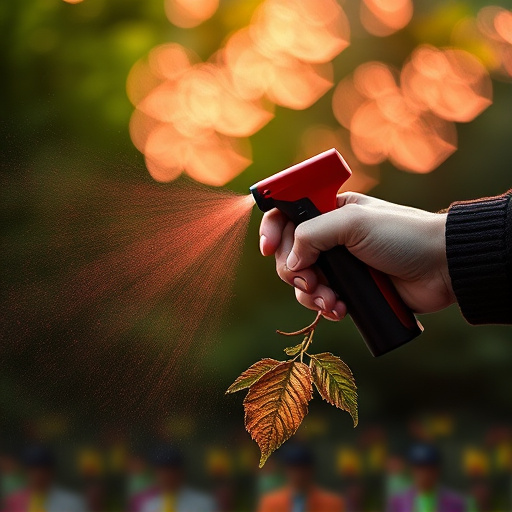Understanding the defensive pepper spray distance range (2–3 meters) is crucial for safe and effective self-defense. Aim at the face within this range to disrupt an attacker's vision and breath. Practice handling, storage, and usage guidelines, comply with local regulations, and use as a last resort.
“Staying safe in unfamiliar or potentially dangerous situations is paramount. This guide explores defensive pepper spray as a powerful self-defense tool, delving into its effective range—a crucial aspect to understand for optimal protection. We’ll navigate safe handling and storage practices, legal considerations, and best practices for targeted applications. By the end, you’ll be equipped with the knowledge to make informed decisions regarding this versatile and effective defensive pepper spray distance range tool.”
- Understanding Pepper Spray's Effective Range
- Safe Handling and Storage Techniques
- Legal Considerations for Self-Defense
- Best Practices for Targeted Applications
Understanding Pepper Spray's Effective Range
Knowing the defensive pepper spray distance range is crucial for effective self-defense. Pepper spray, when used correctly, can stun an attacker and provide valuable time to escape. The typical effective range for a canister of pepper spray is between 2–3 meters (6–10 feet). This range ensures that you can deploy the spray without risking unnecessary exposure, while still allowing it to reach your assailant.
Within this distance, the pepper spray particles can irritate the eyes and respiratory system, temporarily incapacitating an attacker. It’s important to remember that wind, weather conditions, and the attacker’s face position can all affect the spray’s accuracy and range. Therefore, always aim for the face and practice using your defensive pepper spray in various scenarios to maximize its effectiveness.
Safe Handling and Storage Techniques
Proper handling and storage are crucial aspects of ensuring your defensive pepper spray remains effective and safe. When carrying a pepper spray weapon, always keep it in its original packaging with all labels intact. Store it in a cool, dry place, away from direct sunlight and extreme temperatures. It’s recommended to store the spray out of reach of children and other non-authorized individuals for safety.
Be mindful of the defensive pepper spray distance range – typically around 2-3 meters (6-10 feet) – and only use it when absolutely necessary. Never aim or shoot at moving vehicles, as it’s illegal in many jurisdictions and could cause harm to others. Regularly check the expiration date and ensure the can is in good condition before each use. Always read and follow the manufacturer’s instructions for optimal performance and safety.
Legal Considerations for Self-Defense
Before considering defensive pepper spray as a self-defense tool, it’s crucial to understand the legal considerations in your area. The legality and use of pepper spray for self-defense are heavily regulated, with strict guidelines on who can possess and under what circumstances it can be deployed. Different jurisdictions have varying laws regarding the type, amount, and accessibility of pepper spray, so it’s essential to research and comply with local regulations.
The defensive pepper spray distance range is a key legal factor. Laws dictate how close an assailant must be for you to legally use pepper spray in self-defense. This distance varies by location, but typically ranges from 2 to 15 feet. Exceeding this range could lead to legal repercussions, so understanding and adhering to these guidelines are paramount. Remember, using pepper spray outside of the prescribed defensive range or for any reason other than self-defense can result in criminal charges.
Best Practices for Targeted Applications
When using defensive pepper spray, it’s crucial to understand and adhere to best practices for targeted applications. For optimal effectiveness, aim for the face—eyes, nose, and mouth—as this is where pepper spray has the most impact. Maintain a safe distance, typically between 2–3 feet (about arm’s length), to avoid overspray onto yourself or bystanders. This defensive tool works best in close-quarters situations, allowing you to disrupt an attacker’s vision and breath while giving you time to escape.
Remember that pepper spray is not a replacement for self-defense training or proper weaponry. It should be used as a last resort when facing an imminent threat. Regularly review safety guidelines, practice your technique, and keep your spray in an easily accessible yet secure location. Understanding the defensive pepper spray distance range ensures you use it wisely and responsibly.
Pepper spray, when used responsibly and within legal boundaries, can be a powerful tool for self-defense. By understanding its effective range, practicing safe handling and storage, and adhering to legal considerations, individuals can ensure they’re prepared in potentially dangerous situations. Always remember that targeted applications are key; using pepper spray strategically can deter attacks without causing prolonged harm. With the right knowledge and precautions, defensive pepper spray can offer peace of mind and an extra layer of safety.
